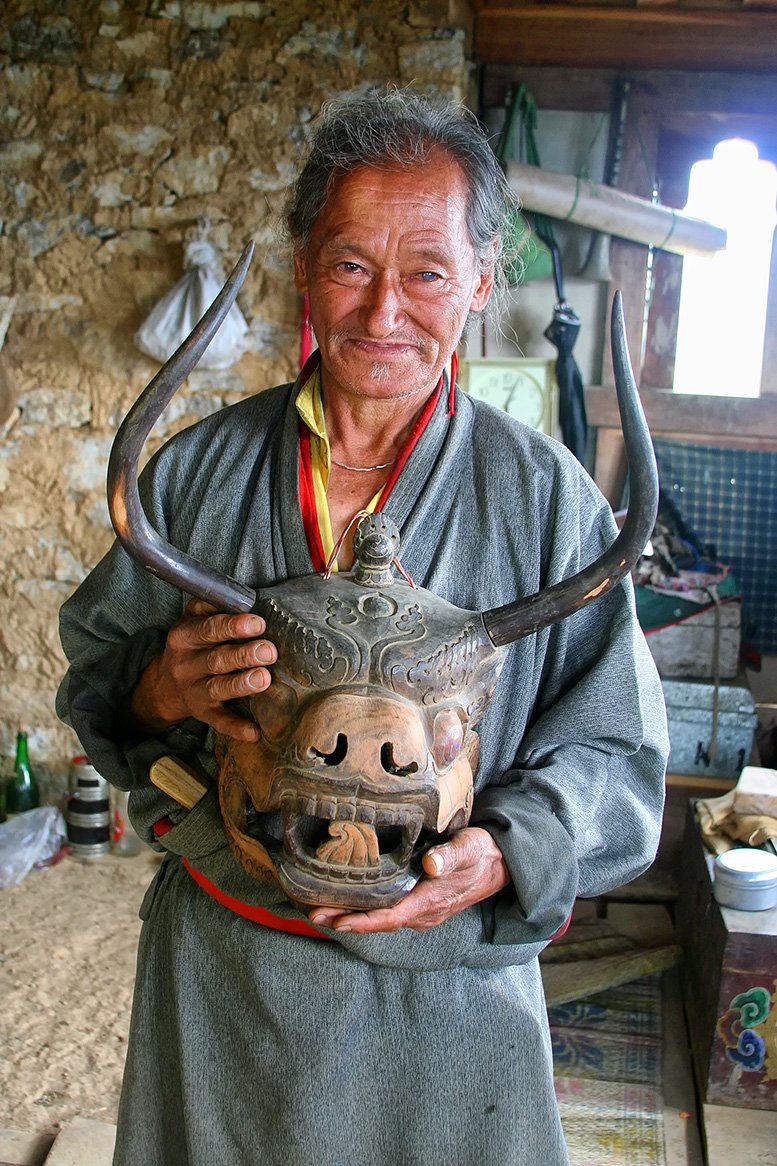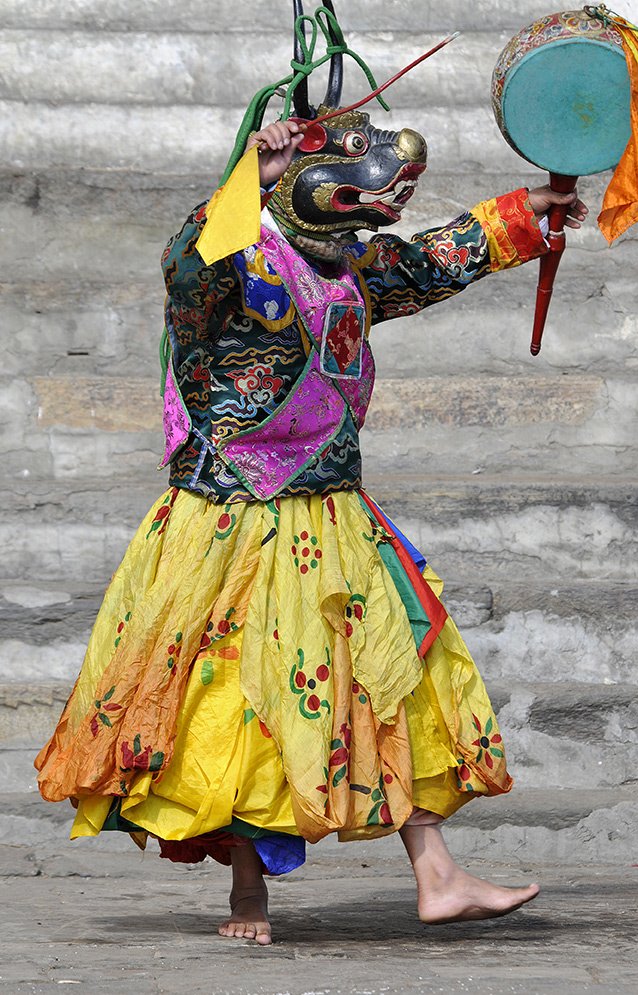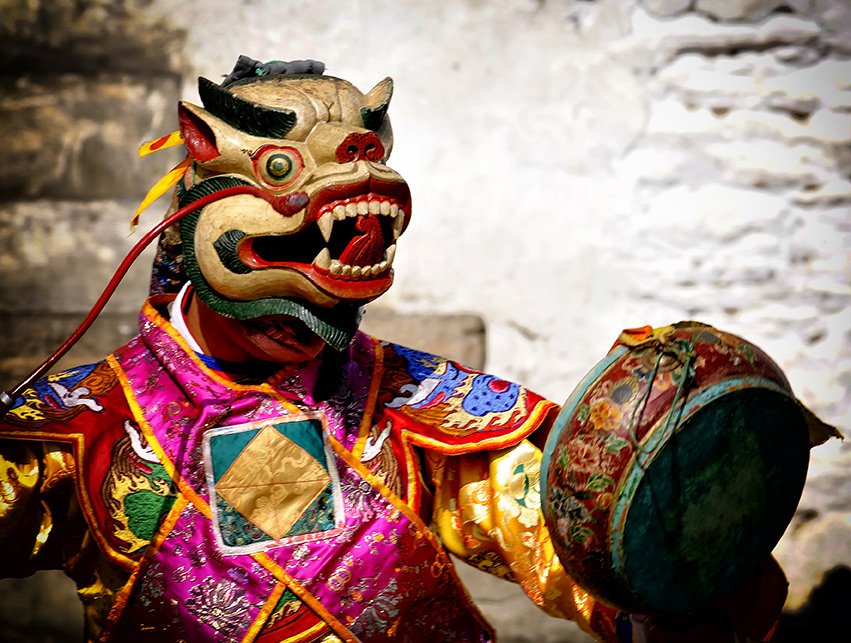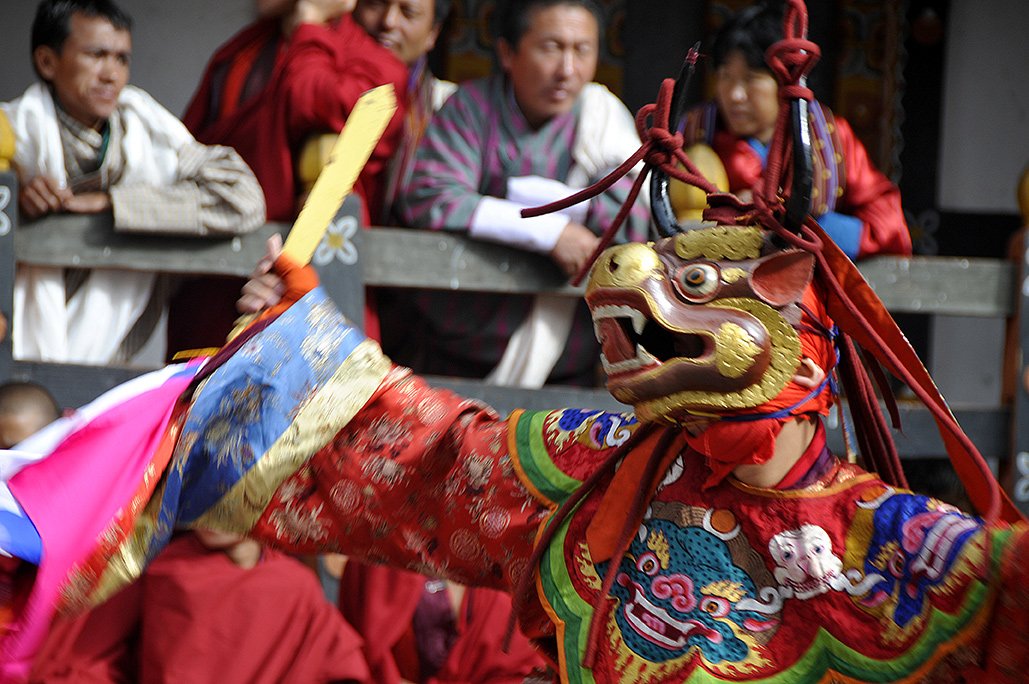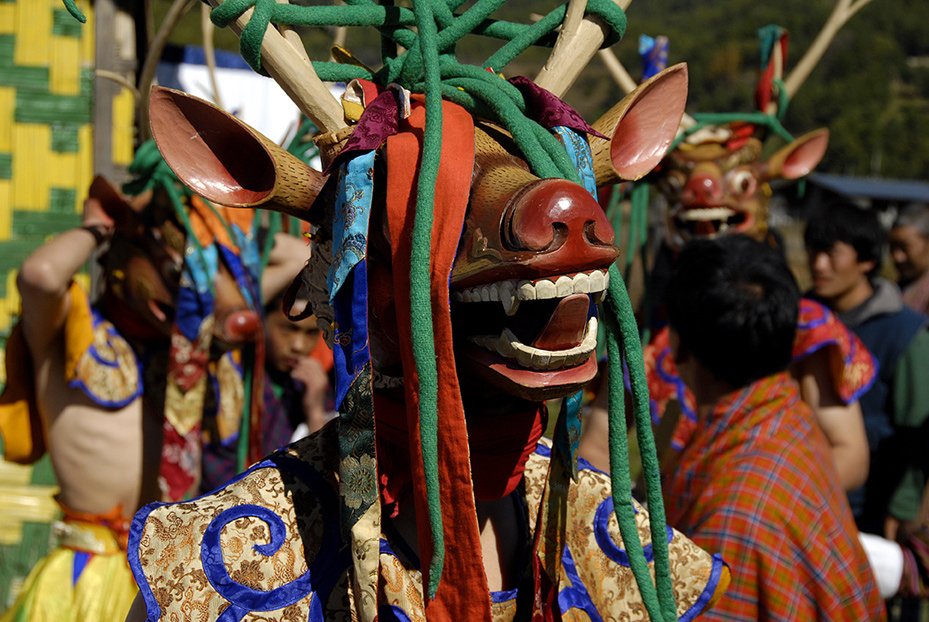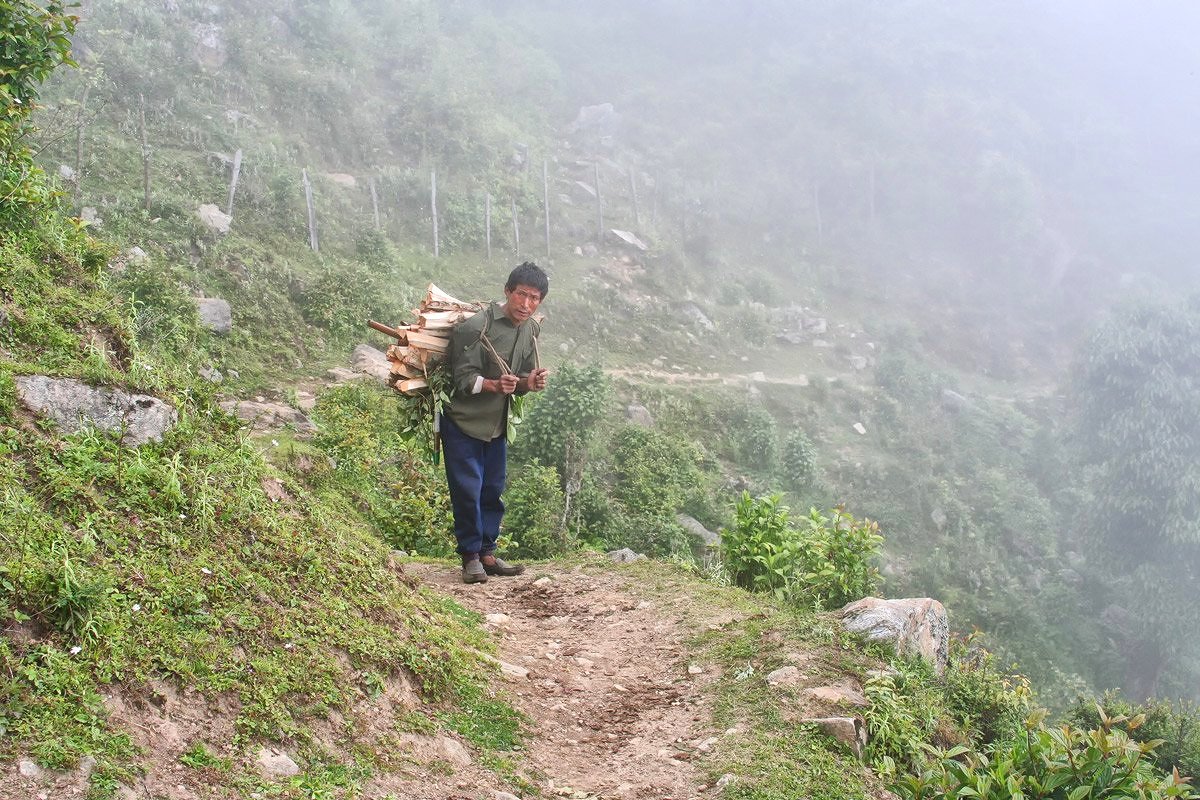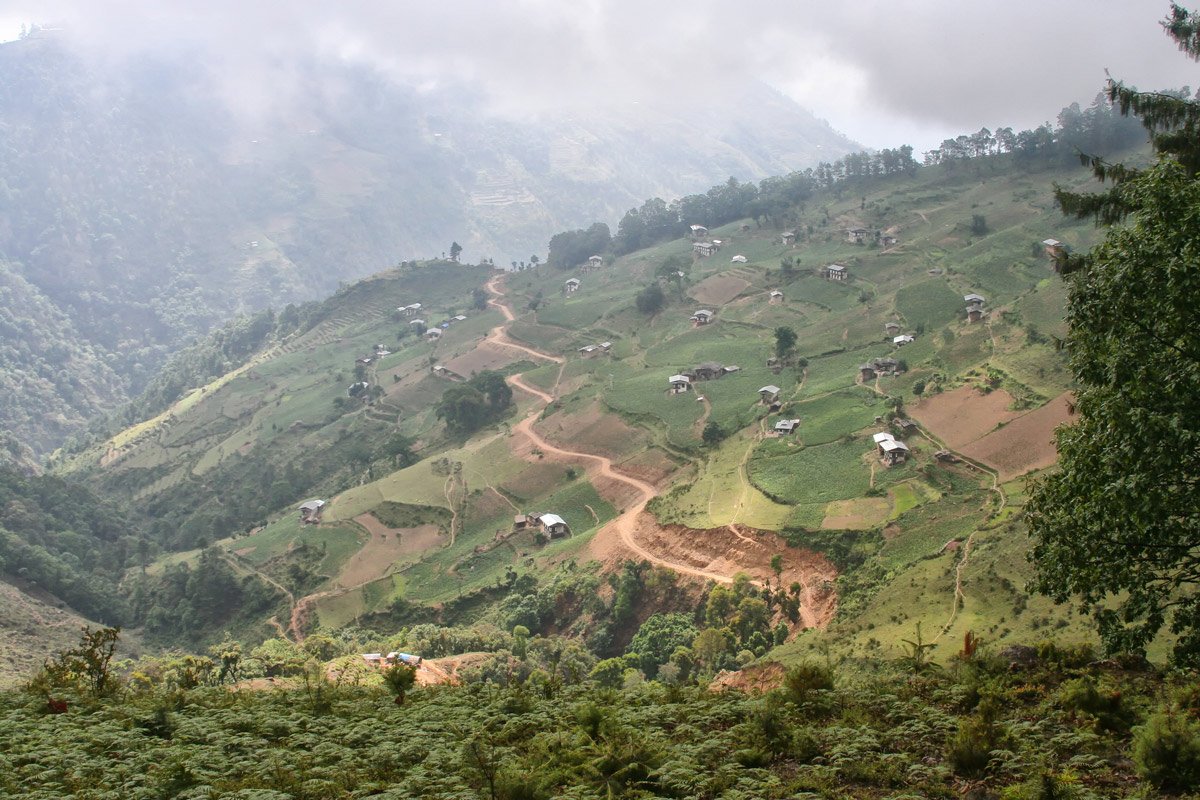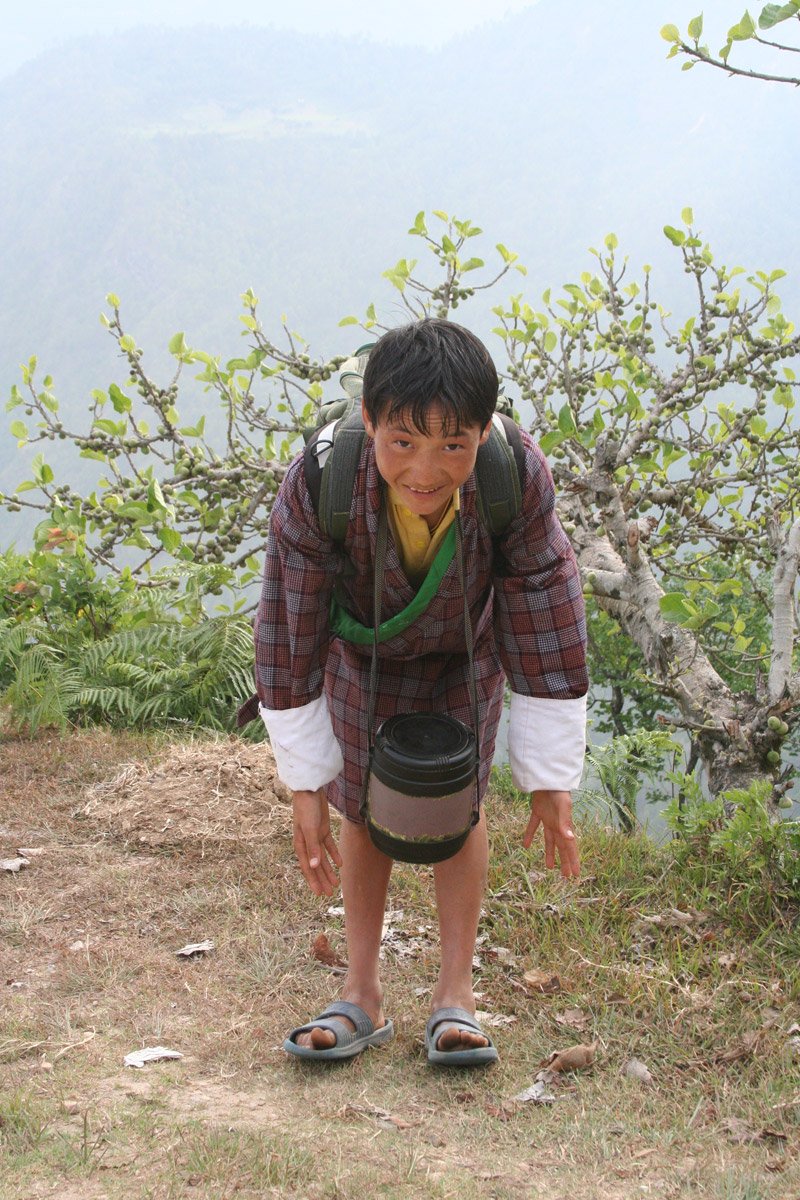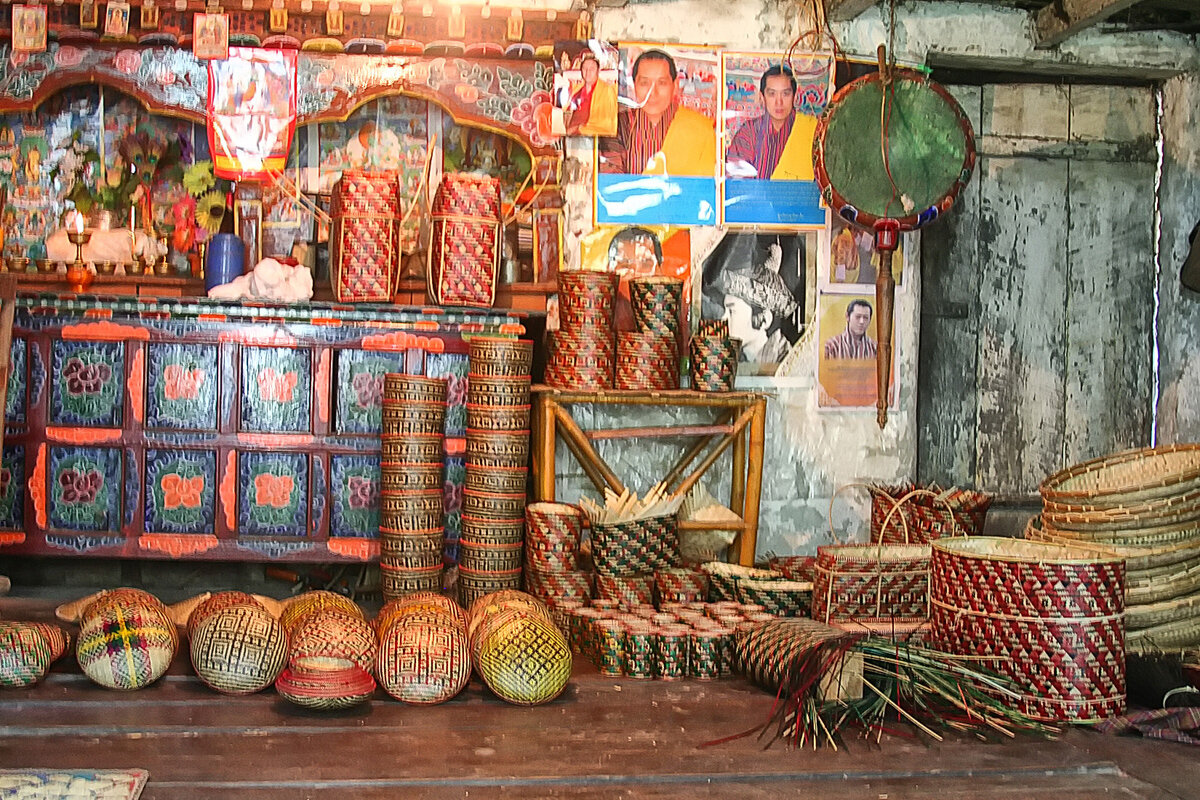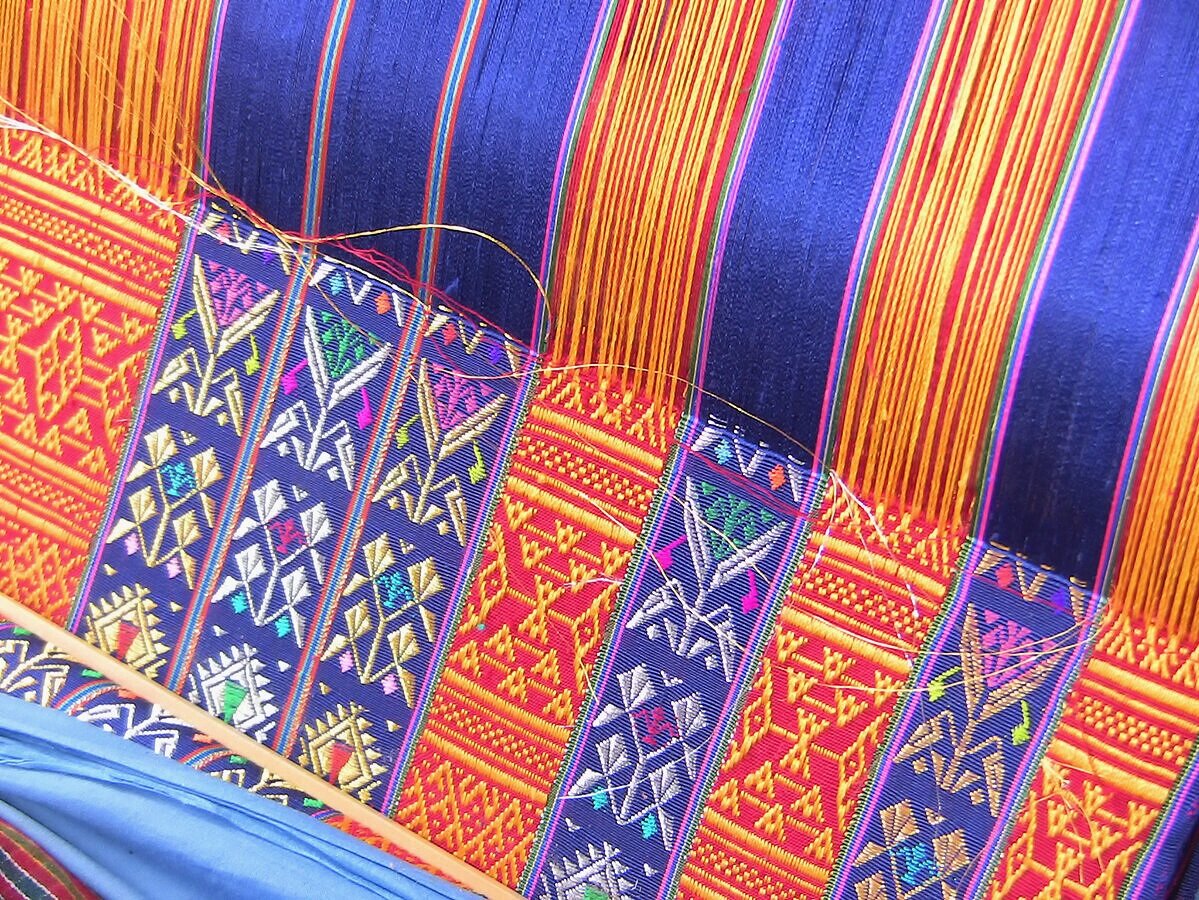
Bhutan Festival Masks
Journey with a quest
It was early June, the beginning of monsoon in Bhutan, when warm air from the Bay of Bengal rises north to collide with the frigid temperatures of the Himalayas, bringing crushing amounts of rain for more than three months. I was in Drametse, a 400-year-old village in eastern Bhutan, with my guide and friend Karchung, who was born here but hadn’t been back in many years. Our quest was to meet the master artisan who creates the sacred animal masks used in the Drametse Drum Dance, recognized by UNESCO as a “Masterpiece of Intangible Heritage.” His name was Lemey Lopen, and he was no ordinary person. His art was pure, without selfish motivation. He created sacred masks for spiritual merit only.
Transformational masks
There are 16 different animal masks, either real or mythical, that represent deities seen in Bardo, the state between death and the afterlife. Buddhists believe that a person must see these at least once in his or her life to be able to recognize the deities in Bardo, after dying and before being reincarnated. At the Drametse Drum Dances, lay monks visualize themselves as the deities of the animal masks they wear, and through a long, meditative trance dance, they cleanse the spectators of all their evils. The mask dances are so spiritually powerful, people in Bhutan believe that by watching them, they will be liberated from the endless cycle of birth and death.
Ox mask (Lango)
Elephant mask (rare)
Snow lion mask (Singye)
Bull-headed mask of Lord Yama, Drametse Drum Dance leader
Deer mask
Dog mask (Chi)
Owl (Ugpa)
Stag mask (Shawa)
Pig mask (Phag)
The journey by road and a trek up a mountain
From Thimphu, the country’s capital, Drametse is a two-day drive on narrow, twisting roads that spiral up to mountain passes of dwarf bamboo, and then plunge to tropical forests thousands of feet below. Even harder and more dangerous to reach was the carver’s house, a three-hour slog up a maze of spider trails to the summit of the mountain, called Babsharon, just adjacent to Drametse but under its jurisdiction. A menacing Tibetan mastiff stood guard over the rocky path to his house.
Dogs and reincarnation: Bhutanese believe that aside from their obvious role of guarding the family from would-be intruders like me or wild animals, dogs are one step below humans in the reincarnation cycle, so there is a certain deference bequeathed to them.
In his simple one-room wood and stone meditation house, lay monk Lemey Lopen greeted us with a welcome drink of arra, the national drink of Bhutan. As a lay monk, he could perform Buddhist rituals but had not taken the monastic vows to become a monk, and so he was able to marry and drink alcohol. His thin gray hair, pulled back in a ponytail, trailed over the collar of his gho; his hands were delicate, strong but not calloused. His gentle aquiline face and deep-set almond eyes almost closed when he smiled. I scanned the room for signs of the animal masks for which he was so famous, but the walls were unadorned, except for two large religious calendars, a massive hanging altar, and on a peg, a faded woolen gho that he used when performing rituals.
Ancestral links
Karchung discussed his father’s ancestral links to Drametse, since Lemey Lopen would not meet anyone from outside the valley. After a lengthy probe into both families’ ancestors, Lemey Lopen learned that his son from his first wife came from the village of Karchung’s mother, and therefore his family and Karchung’s were related. Without this familial link, Lemey Lopen would not have agreed to meet Karchung, as he would have been an outsider. Even though I was a guest in the country, I was permitted to accompany Karchung, my official guide; without him, I could not have visited Lemey Lopen.
Over the weeks of hiking on these spider trails, I was discovering that the village community was rooted in ancestral links. No matter what happened—whether the trees were uprooted, ancestral houses were abandoned, and new ones were erected in the middle of large plantations where English walnuts once stood—it did not matter, if the community links of the families could still be established.
Buddhist ritual prayer
Before carving, the saintly carver sat cross-legged next to an animal skin drum to begin his prayer dedicated to the deity of crafts: Vishnu Karma, the first celestial being who came from the heavenly world to teach them about precious religious art. Lemey Lopen only carved on auspicious days, since knives and chisels were dangerous (Bhutanese carvers carve toward, not away from, their body). The calendars that I had seen on the wall were astrological ones, annotated with special holy and auspicious days.
An early afternoon monsoon wind was beginning to kick up, and Lemey Lopen motioned for us to follow him to his studio.
A Drametse villager carrying up a heavy load of firewood on a rocky path to his village
A new road will replace ancient hiking trails to improve daily life for eastern Bhutanese
Lemey Lopen, his son and his neighbor who prepares food for the lay monks.
Mani wall or a stone prayer wall often found in hidden places along remote walking paths
Bowing with two arms at the side is a traditional form of greeting in Drametse
